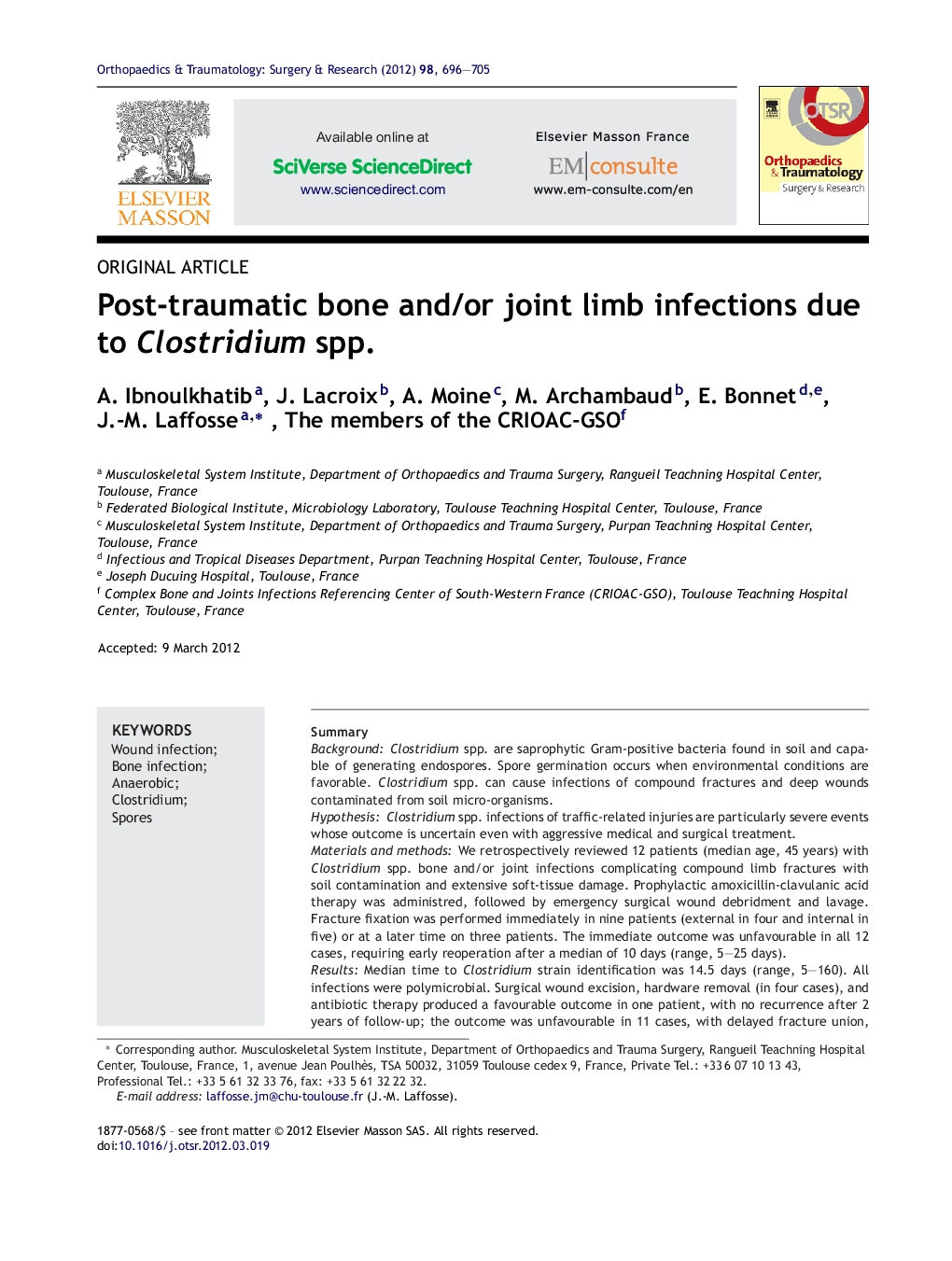| کد مقاله | کد نشریه | سال انتشار | مقاله انگلیسی | نسخه تمام متن |
|---|---|---|---|---|
| 4081684 | 1267604 | 2012 | 10 صفحه PDF | دانلود رایگان |

SummaryBackgroundClostridium spp. are saprophytic Gram-positive bacteria found in soil and capable of generating endospores. Spore germination occurs when environmental conditions are favorable. Clostridium spp. can cause infections of compound fractures and deep wounds contaminated from soil micro-organisms.HypothesisClostridium spp. infections of traffic-related injuries are particularly severe events whose outcome is uncertain even with aggressive medical and surgical treatment.Materials and methodsWe retrospectively reviewed 12 patients (median age, 45 years) with Clostridium spp. bone and/or joint infections complicating compound limb fractures with soil contamination and extensive soft-tissue damage. Prophylactic amoxicillin-clavulanic acid therapy was administred, followed by emergency surgical wound debridment and lavage. Fracture fixation was performed immediately in nine patients (external in four and internal in five) or at a later time on three patients. The immediate outcome was unfavourable in all 12 cases, requiring early reoperation after a median of 10 days (range, 5–25 days).ResultsMedian time to Clostridium strain identification was 14.5 days (range, 5–160). All infections were polymicrobial. Surgical wound excision, hardware removal (in four cases), and antibiotic therapy produced a favourable outcome in one patient, with no recurrence after 2 years of follow-up; the outcome was unfavourable in 11 cases, with delayed fracture union, septic non-union, impaired healing, and/or chronic sinus tract drainage. Several second-line treatments were used in these 11 patients: intramedullary nailing without bone grafting in four patients, with three failures; decortication and grafting in two patients, with failure in both; nailing with decortication in one patient, who had a good outcome; and the induced membrane procedure described by Masquelet in four patients, all of whom had good outcomes. After a median follow-up of 24 months (range, 18–53 months), the bone infection had subsided in eight patients. The remaining four patients had septic non-union.DiscussionClostridium spp. infections are particularly severe. The diagnosis is delayed and identification of the organism is challenging. The treatment is difficult and results in unfavorable outcomes in one-third of cases. The identification of Clostridium in specimens from an osteoarticular infection indicates a need for extremely extensive and aggressive surgical resection, as spore resistance may impair the in vivo efficacy of antimicrobial agents.Level of evidenceIV (retrospective cohort study).
Journal: Orthopaedics & Traumatology: Surgery & Research - Volume 98, Issue 6, October 2012, Pages 696–705